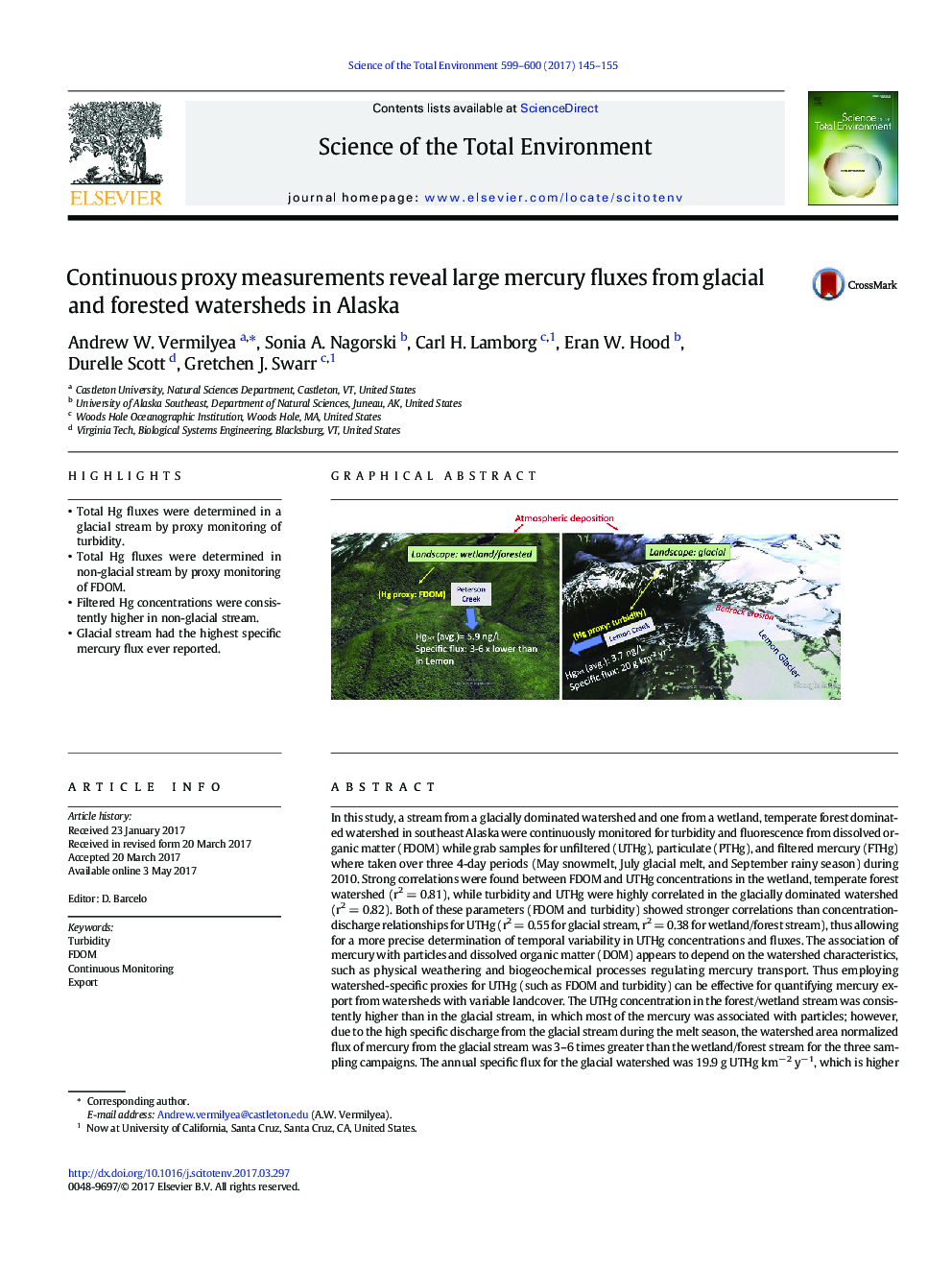| Article ID | Journal | Published Year | Pages | File Type |
|---|---|---|---|---|
| 5750479 | Science of The Total Environment | 2017 | 11 Pages |
â¢Total Hg fluxes were determined in a glacial stream by proxy monitoring of turbidity.â¢Total Hg fluxes were determined in non-glacial stream by proxy monitoring of FDOM.â¢Filtered Hg concentrations were consistently higher in non-glacial stream.â¢Glacial stream had the highest specific mercury flux ever reported.
In this study, a stream from a glacially dominated watershed and one from a wetland, temperate forest dominated watershed in southeast Alaska were continuously monitored for turbidity and fluorescence from dissolved organic matter (FDOM) while grab samples for unfiltered (UTHg), particulate (PTHg), and filtered mercury (FTHg) where taken over three 4-day periods (May snowmelt, July glacial melt, and September rainy season) during 2010. Strong correlations were found between FDOM and UTHg concentrations in the wetland, temperate forest watershed (r2 = 0.81), while turbidity and UTHg were highly correlated in the glacially dominated watershed (r2 = 0.82). Both of these parameters (FDOM and turbidity) showed stronger correlations than concentration-discharge relationships for UTHg (r2 = 0.55 for glacial stream, r2 = 0.38 for wetland/forest stream), thus allowing for a more precise determination of temporal variability in UTHg concentrations and fluxes. The association of mercury with particles and dissolved organic matter (DOM) appears to depend on the watershed characteristics, such as physical weathering and biogeochemical processes regulating mercury transport. Thus employing watershed-specific proxies for UTHg (such as FDOM and turbidity) can be effective for quantifying mercury export from watersheds with variable landcover. The UTHg concentration in the forest/wetland stream was consistently higher than in the glacial stream, in which most of the mercury was associated with particles; however, due to the high specific discharge from the glacial stream during the melt season, the watershed area normalized flux of mercury from the glacial stream was 3-6 times greater than the wetland/forest stream for the three sampling campaigns. The annual specific flux for the glacial watershed was 19.9 g UTHg kmâ 2 yâ 1, which is higher than any non-mining impacted stream measured to date. This finding indicates that glacial watersheds of southeast Alaska may be important conduits of total mercury to the Gulf of Alaska.
Graphical abstractDownload high-res image (635KB)Download full-size image
